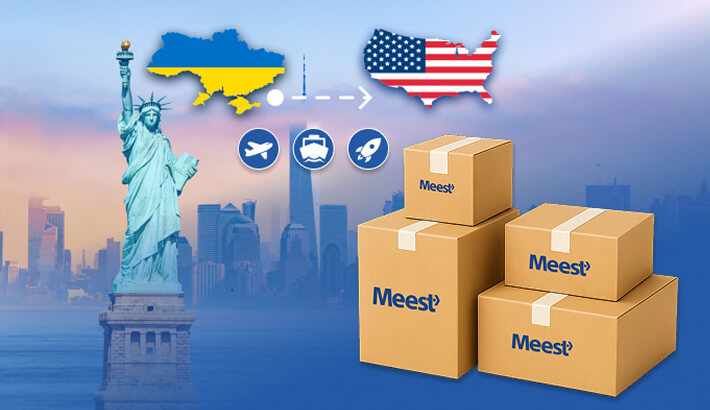


USPS vs. UPS
Even though UPS and USPS shipping services differ only by one letter, the way they work and what services they provide are not as similar as their abbreviated names. Both carriers offer domestic and international shipping and provide tailored services for e-commerce.
Those features are among the similarities, of course. However, pricing, shipping options, and the way they work with customers are among the key differences that allow businesses to decide which one is more suitable for their needs.
Given the increased interest in those companies and the constant debate of UPS vs. USPS, we have prepared a comprehensive guide on the services provided by those carriers and their comparison in key aspects.
Overview of Each Carrier
Those are the two oldest shipping services in the United States. They have evolved significantly since their establishment and are currently efficient and professional package carriers that offer shipping both within the US and outside the country. Let’s take a close look at the background of the two companies.
Brief History & Mission of USPS
The United States Postal Service (USPS) traces its roots to 1775, when Benjamin Franklin was appointed the first Postmaster General. In 1971, it became an independent establishment, transitioning from the Post Office Department. providing universal, reliable, and secure mail and package delivery to every address in the United States, regardless of location or profitability, as it strives to make postage affordable to everyone.
Brief History & Mission of UPS
Even though the history of United Parcel Service (UPS) began in 1907, it was not until 1919 that it adopted its UPS name and became a global logistics leader. This company focuses on delivering premium-quality logistics services. At the same time, it strives to stay aligned with customer needs and enable global commerce through innovation and efficiency.
What Are the Key Differences in Service Type?
Both companies deliver parcels, but they are two very different entities that vary in the way they work and what they ship. What is the key difference between UPS and USPS?
UPS is a private logistics company that offers a wide range of services and specializes in the shipping of heavy and bulk packages across the US and beyond. It offers ground and freight forwarding shipping options.
At the same time, USPS is a rather independent agency of the federal government. Its shipping options focus mainly on what a traditional post office does. Thus, it delivers letters and small packages. Its services are available both domestically and internationally.
Domestic Shipping Comparison
Both couriers offer different service types to their customers. Below you can find the main options and their features in terms of speed, pricing, and package types. This overview can help you to quickly find a shipping variant that is suitable for your needs. You can also compare express and economy shipping options, discover which of them is perfect for commercial shipping, and which is good for residential deliveries.
Service Types
Three main types of shipping options are used most often and cover the needs of thousands of customers, namely:
- First-Class Mail - suitable for lightweight packages and letters;
- Priority Mail - possible for packages of up to 70 lb;
- Retail Ground - perfect for heavy items of up to 70 lb.
If you decide to choose United Parcel Service as your carrier, you can select one of the following options:
- Ground;
- 2nd Day Air;
- Next Day Air.
When it comes to different UPS transportation options, it is not about the weight of the parcel but about the speed. The maximum weight of a parcel is 150 lb for all three types. That is higher than that offered by the United States Postal Service, so you should opt for UPS when you have a heavy parcel.
Delivery Speeds
Unless it is a really short distance between the departure and destination places, do not expect same-day arrival of the parcel if you select the United States Postal Service. On average, you need to wait for three days to receive your parcel, but some delivery types make it as long as 8 days.
As for the services provided by United Parcel Service, they are far more flexible. Depending on the urgency, you can expect the next day for your parcels. Normally, shipping takes no more than 2 days on average, and the timing is guaranteed by a selected type. Thus, if you choose Next Day Air, the arrival of your package the next day is guaranteed.
Pricing
Generally, USPS is more affordable. However, such budget-friendliness impacts the shipment speed. Another factor that makes its shipping cheaper is the fact that only lightweight and small packages are transported.
However, it is the dimensional weight that is in priority for shipping cost calculation. Thus, if you send something bulky, but lightweight, be ready that the cost will not be small, as it is the size of the box that counts, not the actual weight. Given this, make sure you have effective packaging to reduce costs. For this, choose the box that fits the size of the shipped goods perfectly.
So, which is cheaper, UPS or USPS? United Parcel Service has zone-based rates. This means that the cost of a shipment is determined by the distance between the origin and destination places. It has different places united in clusters for convenience. Thus, the shipment within one zone is much cheaper than that.
At the same time, with flat rates from USPS, you can send parcels that meet certain criteria at the same price. Such a system allows you to avoid unnecessary calculations. With flat rates, you can easily calculate a price for any parcel.
Here is an example of UPS same-day delivery price and USPS overnight rates:
- USPS Overnight — flat-rate envelope starts at $27.20 commercially and $31.40 at the Post Office;
- UPS Next Day Air Early — a letter delivery could range from $60.56 to $100.08, depending on the zone and discounts.
Given the way shipping is calculated, USPS is more beneficial for non-urgent deliveries, especially when the cheapest option is chosen. UPS might appear to be cheap, if it is a short-distance delivery that you need.
Tracking and Delivery Confirmation
Both companies offer tracking and delivery confirmation features, but they differ in their specifics. UPS tracking provides more detailed, real-time updates, including estimated delivery times, and offers features like "UPS My Choice" for managing deliveries. USPS tracking, while accurate, may not offer the same level of real-time detail.
On top of that, when you choose UPS, you might expect proof of delivery and estimated arrival time, as well as automated notifications and data-driven insights. USPS, in its turn, boasts text alerts, delivery confirmation, tracking on an online portal, and informed delivery, among other options.
International Shipping Comparison
Both carriers have international shipping options, so you might choose any of them depending on your needs. If you need to send your package to Canada or overseas, you should look for the USPS Priority Mail option or Global Express. Regarding UPS, you should take a close look at Worldwide Saver, Expedited.
Pricing and speed differences
Arrival times and prices for both carriers differ slightly. You can find UPS vs. USPS rates below, as well as a shipping speed comparison.
Here is what you might expect if you select one of the shipping options by the United States Postal Service:
- arrival time from 3 to 10 days;
- around $40-60;
- tracking is available;
As for the USP, its international services offer the following:
- arrival within 1-5 days;
- pricing starts at $20;
- tracking is provided.
Overall, UPS is faster and more affordable, especially for heavyweight parcels. USPS still remains a good option for lightweight packages.
Customs Handling & Fees
When it comes to customs handling, those two companies have similar services. Yet, there are slight differences that might encourage you to prefer one shipping company over another. Take a closer look at how USPS handles customs through the destination country’s postal service. Thus, you get a lower risk of surprise fees. All you need is to fill out a customs form. The United States Postal Service will include basic insurance and tracking.
At the same time, UPS offers door-to-door customs clearance, but may charge brokerage fees and duties upfront. Faster and more transparent, but potentially more expensive.
Reliability & Customer Service
Reliability and customer support matter a lot when it comes to the choice of shipping provider. Though many customers ignore those aspects and focus only on speed and price. Yet, the aspects mentioned below are essential for a positive customer experience. Let’s see which of the carriers is better for delivery accuracy, claims and insurance, and customer support.
Delivery Accuracy - UPS
The accuracy of delivery handled by UPS is as high as 98%. Thus, it is certainly one of the most reliable carriers for both domestic and international shipments. Though USPS’s accuracy has improved over time, it is still much lower than that provided by UPS. For international and remote-area deliveries, it may even dip to 80–87%.
Claims Process & Insurance - USPS
Claims are accepted within 60 days, while USPS takes less time for the claims. For the governmental postal service, resolution usually takes 5–10 days, but lost mail claims may take longer due to missing mail searches. At the same time, UPS provides a resolution typically in 8–10 business days. There is an online claims portal. Also, take into consideration that UPS offers optional declared value coverage and fast electronic payouts.
Customer support - UPS
UPS offers a 24/7 virtual assistant. Live agents provide phone support. Moreover, there is a detailed online claims dashboard that allows you to track your inquiries. Support is generally responsive, though some users report difficulty reaching a human agent during peak times.
As for the USPS, it offers support via phone, email, and online forms. Unfortunately, customer service is mostly slow, and many customers report that they had to wait for a while to receive a reply. During high-volume periods, delays in replies are even longer. As for the technical support and Informed Delivery assistance, be ready that it may require multiple follow-ups.
Package Handling - UPS
Generally, UPS is known for having fewer damage or lost package incidents. Moreover, whenever those happen, you can provide the required documentation, and your claim will be resolved within 10 days.
For the United States Postal Service, occasional damage or misdelivery might occur, given that it handles a massive volume of mail. For the claim, you need to provide full documentation. Be ready that an in-person inspection at a local post office might be necessary.
Business Tools & Integrations
Both USPS and UPS have features that attract businesses and ensure their convenient usage of the provided services.
For USPS, the list of such services includes:
- USPS shipping APIs that allow businesses to benefit from address validation, rate calculation, label creation, tracking, and package pickup scheduling;
- Click-N-Ship allows small businesses to create shipping labels, schedule pickups, and manage shipments without needing technical integration.
As for UPS, business owners might benefit from:
- UPS WorldShip is downloadable desktop software that integrates with databases (ODBC/XML) and platforms like WooCommerce, streamlining label printing, order management, and shipping documentation.
- API integrations for e-commerce platforms that offer a full suite of tools for real-time rates, tracking, address validation, and customs documentation.
Those tools are perfect for small businesses that seek a way to streamline their delivery speed and make their service work efficiently. USPS is a go-to for small businesses shipping lightweight, domestic packages, thanks to its affordability, free supplies, and easy access. At the same time, UPS is better for businesses that ship heavier items, need detailed tracking, or manage higher volumes.
Special Services & Features
Both carriers have special services that enhance customer experience and make delivery more efficient and convenient. You can find some of those overviews below.
USPS PO Box Delivery vs. UPS Access Point Network
USPS offers PO Boxes at post office locations nationwide. This way, customers do not need to stand in line to get their mail or small parcels. There are five box sizes and rental terms. PO Boxes are ideal for individuals or small businesses seeking a professional mailing address or added privacy.
UPS, on the contrary, has a vast Access Point® network. It is a system of local businesses (like grocery stores and pharmacies) where customers can drop off or pick up packages. This service is perfect for people who aren’t home during delivery hours. Customers receive notifications when packages are ready, and pickups are available for up to five business days.
Weekend Delivery
Even though USPS and UPS normally do not work on the weekends, there are some exceptions, with USPS being more flexible in terms of those. USPS delivers on Saturdays at no extra charge for most services, while Sunday delivery is limited to Priority Mail Express and select Amazon packages. As for UPS, be ready to pay a $16 surcharge for Saturday delivery. Sunday delivery is not standard and is offered extremely rarely.
Pickups: Scheduled vs. On-Demand
There are both options available regardless of your choice of the shipping company. It also does not really depend on the selected service, so you can simply choose which of the pickup options is more suitable for you.
Use Case Scenarios: Who Should Choose What?
Let’s take a closer look at real-world examples of shipping needs and services that are better in each case.
Urban Retailer Needs Fast Shipping Across the US
A boutique shop in Atlanta needs to get customer orders to New York within two days. UPS is the smarter choice, offering reliable 2nd Day Air with precise delivery tracking and business-friendly pickup options.
Home-Based Seller Needs to Ship Small Items Across the Country
An Etsy seller in Ohio regularly mails prints and stickers under 1 lb. USPS First-Class Package Service keeps shipping costs low and includes tracking. Thus, it is a perfect option for keeping profits without sacrificing reliability.
Mailing Legal Docs with Proof of Delivery
A freelance consultant in San Diego sends signed contracts that require confirmation. It means fast delivery with verifiable tracking and optional signature confirmation is necessary, so UPS Ground or UPS 3 Day are perfect services for such a case.
Conclusion
When choosing between USPS and UPS, the choice is all about your shipping priorities. Delivery of lightweight packages, PO Box deliveries, and cost-effective nationwide coverage, USPS is ideal for small businesses and individuals who expect affordability and broad access. It offers First-Class and Priority Mail and provides strong value for low-volume e-commerce sellers.
On the other hand, UPS excels in speed, detailed tracking, and reliability for heavier shipments or time-sensitive deliveries. With tools like WorldShip, extensive API support, and predictable delivery windows, UPS is often preferred by businesses needing scalability.
All in all, USPS is better suited for casual senders or budget-driven operations, while UPS serves those prioritizing logistics control and end-to-end tracking. Many businesses find using both to be the best solution, as the rates depend heavily on weight, urgency, and destination.

















